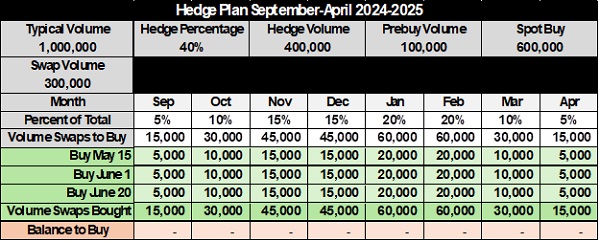How falling propane prices will affect the fall, winter seasons
In the Know is a monthly partnership between LP Gas magazine and Propane Resources. Our focus this month is on the heating season, addressed by supply and risk management expert Pat Thornton.
Q: Propane inventories have soared to record-high levels and the price of propane has plummeted. What does it all mean for propane retailers as we head into the fall crop drying and winter heating seasons?
A: It seems propane marketers are enjoying some extremely low propane prices as we enter the winter heating season. With strong propane supply levels and crude oil prices at six-year lows in the United States, it certainly seems unlikely that prices will increase significantly this winter.
Before taking your eye off the supply ball, it is important to consider the factors in our marketplace that could push prices up. Sometimes it is tough to determine demand levels around crop drying season. We may not experience a demand like we saw in the winter of 2013-14, but it is possible there will be a good amount of drying this fall with a wet season and a lack of heat across much of the Midwest.
Inventory levels hit 90 million barrels in early August, and there is no doubt that hitting 100 million barrels is likely before winter. We need to keep in mind that all roads lead to Mont Belvieu regarding propane supply, but most avenues leave by sea in the Gulf Coast. The days of multiple pipelines moving product from Mont Belvieu to the South, Midwest and Northeast are gone.
As we saw in January 2014, sending a truck was the best way to get product from Mont Belvieu, which was an expensive, time-intensive proposition. With more than half of the product in the Gulf Coast region, we still must rely on a smaller quantity of propane than what is in the weekly Energy Information Administration data for the U.S.
Alternately, stronger production levels in some regions of the U.S. allow for propane to move short distances quickly from production to the end user. Throughout much of the eastern U.S., propane pricing based on Mont Belvieu prices may come to an end in the not-too-distant future. Production is the main source of propane in the northeastern U.S. today. While this may seem good, potential problems could increase prices as the new distribution system is put to the test.
There are a few concerns. With large supplies of ethane, a storage problem could develop if the Marcellus region cannot move natural gas liquids fast enough. This could easily force production shut-in and cause retailer supply disruptions that would work through the entire eastern U.S. as Marcellus production is moved into the north and southeast U.S. In a scenario where too much production is shut in, the Mont Belvieu price plus shipping costs of the past may look very attractive.
Although crude oil seems to be finding new factors each day that apply pressure, the Middle East always seems to be one crisis away from higher prices. Nonetheless, oversupply of crude will help crude stay lower for the foreseeable future. Even without a crude oil crisis, propane can find supply and demand issues to create a crisis here in the U.S., as we saw in January 2014. While it is unlikely that we’ll see that situation again, we should keep in mind that anything is possible.
As our shipping capacity expands, we will be able to ship every drop of propane produced in the U.S. by sometime in 2016. With the Panama Canal set to open to larger ships, economic factors will only become more favorable to shipping propane around the world. Unlike crude oil and natural gas, propane has no legal limits on the volume that can ship out of the U.S. It is only the laws of economics that will keep propane in the U.S. in a high-demand situation worldwide and that means higher prices for all of us in the U.S.
There is a strong undercurrent to balance the world price with the U.S. price. While we don’t know when it will happen, it often balances faster than the market expects with so much money at stake.
Pat Thornton is a supply and risk management expert for Propane Resources. He can be reached at 913-262-0628 or pat@propaneresources.com.

















